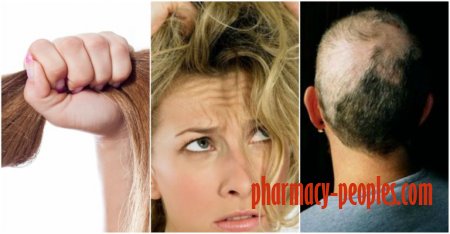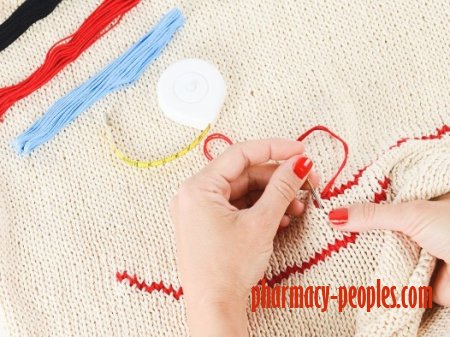Trichotillomania: Causes, Symptoms, and Solutions
“You know, sometimes I feel well and vital in the world, and sometimes I just feel so distressed I want to pull my hair out by the roots.” ~Sharon Stone.
For many, there is something natural about feeling like you want to pull all of your hair out when you’re stressed or overwhelmed. But for millions of others, this is more than a feeling – it is a reality.
The condition, known as “trichotillomania,” effects as much as 4% of the population at some point in their life (roughly 280,000,000 people in the world), and is a common and frequent symptom of stress and anxiety. It’s also not well known, and many people struggle with the condition in silence.
What is Trichotillomania?
Trichotillomania is the name for the desire or compulsion to pull out your own hair. It is a complicated issue, one that is believed to be directly related to anxiety and stress, but can also run in families and occur for no apparent reason at all.
Those that struggle with trichotillomania often find that they are frequently tugging on their hairs hard enough to pull it out by the root. In some cases, when the trichotillomania is frequent or is concentrated into a single area, it may result in the development of visible bald spots on the scalp.
The term “trichotillomania” was coined in the 1800’s. It translates to “hair pulling madness.”
Trichotillomania Symptoms
Most people that struggle with trichotillomania are aware that they have the problem. But many do not realize they’re pulling out their own hair while they’re doing it – only after they have been pulling their hair for a while, or when someone points it out to them.
The symptoms of trichotillomania are:
- Desire to pull out hair.
- Signs of baldness.
- Broken hairs.
Keep in mind that hair pulling is not limited to the scalp either. Although it is more common to pull hairs on the top of the head, some people pull on their eyebrow hairs, facial hair, chest hair, and underarm hair.
Usually, although not always, the hairs are pulled only one at a time.
Hair loss can be permanent, but usually, the hairs will grow back if you learn to control the trichotillomania. However, because the condition can be embarrassing, some people also struggle with low self-esteem, social phobia, and other related conditions.
Trichotillomania Causes – Why Do People Pull Their Hair?
There is evidence that trichotillomania can run in families, meaning that somehow there is a genetic cause. But not everyone with parents that pulled their hair is going to develop the condition. Usually, the development of trichotillomania is brought on by one of the following:
Anxiety and Stress
The most common and most frequent cause of trichotillomania is anxiety and stress. But why do anxiety and stress cause hair pulling? Researchers aren’t exactly sure. It appears to be similar to other anxiety related ticks, like your nails or shaking your leg. There appears to be something about the impulse of pulling hair that people find soothing. Perhaps the mild pain that hair pulling causes leads to some type of “good feeling” that occurs at a chemical level. Nevertheless, the impulse to pull hair appears to be stronger when someone has anxiety and stress. There is evidence that it has a calming effect on the nerves.
OCD Compulsions
Although obsessive compulsive disorder is an anxiety disorder, it deserves its own place as a cause of hair pulling. Obsessive compulsive disorder occurs when someone’s obsessions (chronic thoughts) lead them to developing habits to help them stop those thoughts, known as “compulsions.” Once again, it’s not entirely clear why hair pulling is the habit instead of some other compulsion, but it does appear to be more common in those with OCD.
Self-Harm
There are some that believe that trichotillomania is a form of self-harm, much like cutting disorders and self-mutilation. This may be true in select cases, but it is likely rare that this is the problem. Although hair pulling can cause momentary instances of pain (which, as in the case of self-harm disorders, some people perform “just so they can feel the rush”), the pain is usually not very pronounced and the link between the two is weak at best. It is possible that some people pull their hair as a form of self-harm, but most instances are going to be related to stress.
Some people also pull their hair due to boredom, where they are lost in thought and their hands simply are unsure what to do. Interestingly, there is evidence that those that are bored experience an excitatory effect when they pull their hair, even though those with anxiety experience a calming effect.
If it seems as though the cause of trichotillomania is not entirely clear, that’s because it is not. There doesn’t appear to be a specific reason that people choose to pull their hair. But there also isn’t a clear reason that some people bite their nails, and yet millions of people do.
Most likely, it is an instinctual behavior left over from our days as primates. Perhaps early man needed to pull out hair for comfort, and even though modern man can shave and get haircuts, the instinct is triggered by stress.
No matter the cause, those with trichotillomania generally don’t want to have the habit, but either:
- Feel too much of a desire to do it and give in.
- Don’t realize that they’re pulling their hair while they’re pulling it.
It can eventually develop into a common habit, and once anything becomes a habit it becomes far more difficult to control without help.
Trichotillomania Treatments
Trichotillomania is very treatable. There is a small catch though. While most people do not want the consequences of hair pulling, such as baldness, there is a conscious or subconscious desire to pull out hair. Remember, the compulsion itself is the desire to pull out their own hair.
Any time a person wants to do something on any level – even a subconscious level – stopping it can be a bit tricky. There will be that part of you that wants to keep plucking away, and this part may be especially problematic when you’re bored, anxious, stressed, or simply not paying attention.
That’s why before you even look at trichotillomania treatments, you’ll need to start with the following:
Mindfulness
Mindfulness is not a cure for trichotillomania, but it does play a role in your ability to treat it. Those that have trichotillomania rarely realize they’re pulling their hair, or at least do not necessarily feel like they can stop and control it. Mindfulness is an important starting point. With mindfulness, you train yourself to be aware of when you’re pulling your hair so that you can make sure you have control over the habit. You can do this by:
- Setting reminders throughout the day to make sure you’re not pulling your hair.
- Asking friends or loved ones to tell you when you’re pulling your hair.
- Immediately controlling your hands and paying attention when you feel stress/anxiety.
Essentially mindfulness is simply an awareness of the present. Habits are more common when you’re lost in your own thoughts or busy with other things. That’s why many people with trichotillomania pull their hair while driving or while sitting at home watching TV: their mind isn’t on what their hands are doing, they’re just thinking about their anxieties.
Training yourself to be more aware of the present and your behaviors through these regular reminders is an important step for avoiding trichotillomania.
Busy Hands
Also, if your hands aren’t free you cannot pull your hair. A large part of curing trichotillomania is simply breaking the habit. Keeping your hands busy is a great way to start breaking that habit.
But what can you do with your hands?
Some ideas include:
- Holding onto a stress ball throughout the day.
- Taking up knitting, drawing, Sudoku, or some type of hand-related hobby.
- Walking, sports, or engaging in some activity that keeps you busy.
If your hands aren’t free to pull your hair, then the habit of pulling your hair cannot take place. Some experts also recommend wearing a hat for a while (if the hair pulling is one your head) so that you’re unable to touch your hair to pull it. This will also help you realize when you’re about to pull your hair – if you reach up and touch your hat, chances are you were going to start hair pulling.
Treatment for Trichotillomania
Treatment for trichotillomania is a bit more complicated. Interestingly, the two starter strategies discussed above are commonly used together in the treatment for trichotillomania as well, within a type of therapy called “Mindfulness-Based Cognitive Behavioral Therapy.
”In this therapy, the client is thought how to control their thoughts and behaviors using cognitive behavioral therapy techniques, which include things like learning how you respond to stress and anxiety, being able to separate your thoughts from your sense of self, and replacing the behavior.
In addition, the most successful way to stop trichotillomania is to control your stress and anxiety. If you don’t feel anxious, and you are able to cope with stress, you are less likely to experience symptoms.However, there are some strategies you can try to do at home. In addition to mindfulness and keeping your hands busy, you can also try:
Habit Replacement
Related to both mindfulness and busy hands is the idea of replacing the habit with a more productive one. If you notice that you were about to pull your hair, consider replacing it with a new habit, like snapping your fingers or tapping on your knee. You should always prioritize reducing your stress and anxiety, but a habit like tapping on your knee is less likely to affect your self-esteem than pulling out hair. Habit reversal is a great tool for long-term trichotillomania treatment.
Relaxation Training
In addition, once you’ve developed mindfulness of your condition, the next step is to teach yourself to relax. Similar to habit replacement, the idea is that you engage in something productive rather than pull hair. If you find that you’re anxious and you pull your hair, you can try relaxation strategies like deep breathing and progressive muscle relaxation to calm yourself down and regain your ability to control your behaviors.
Reading This Article
Well no, not exactly. But experts have found that those that take the time to regularly read more about trichotillomania and anxiety are more able to prevent it. This is likely because the more the mind understands the condition, the more likely you are to be aware about when the compulsion is about to take place, as well as be able to remind yourself not to pull. In a way, simply reading this article is a great way to start.
Boredom based trichotillomania also has a unique cure – find ways to be less bored. You can also try to engage in more physical activities, which tire the body and make it less prone to boredom behaviors.
Similarly, anxiety based trichotillomania does require that you learn how to control and regulate your anxiety better, because as long as stress continues to affect you unimpeded, you may continue to find that your hands have the urge to start pulling. But if you can cure your anxiety, so too would you prevent this stress hair pulling habit.
Treating Trichotillomania is Probable, Not Just Possible
There is considerable good news: trichotillomania is highly treatable for those that want to treat it. For many, the reason it becomes such a significant problem is because it can take months or years for someone to seek out help. Once you start focusing on reducing and curing the condition, you’ll find that you are in much more control over when it occurs.
Recurrence IS an issue, however, because any habit that is triggered by stress and anxiety runs the risk of coming back when you’re under future stress. That is why controlling your anxiety is always going to be a critical part of any trichotillomania treatment plan.
- Health / Disease
- 21-05-2018, 16:13
- 1 624
- Pharmatic





